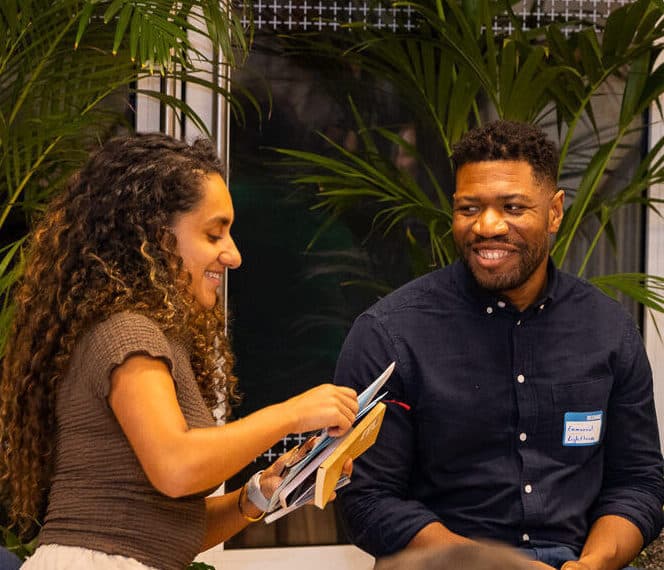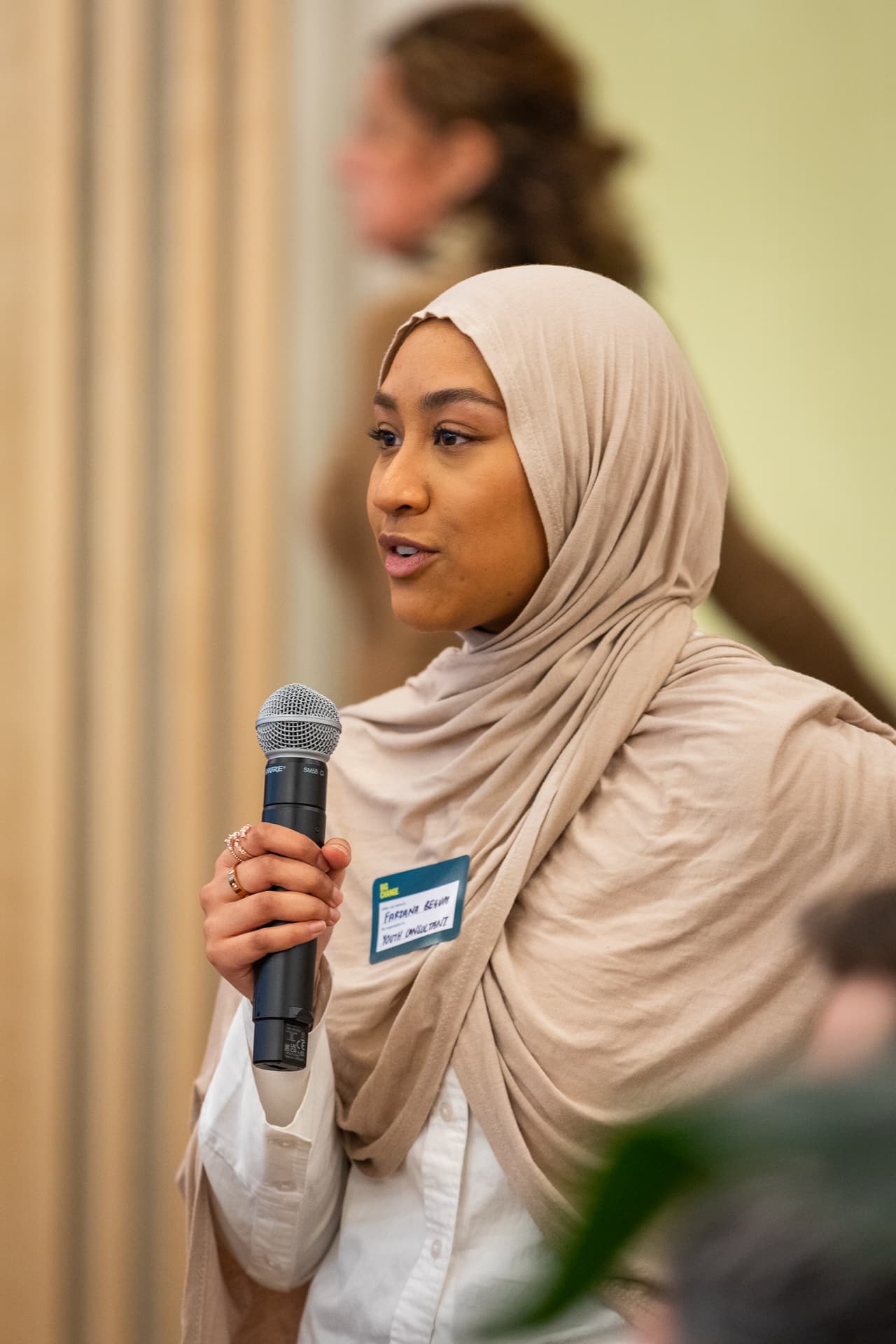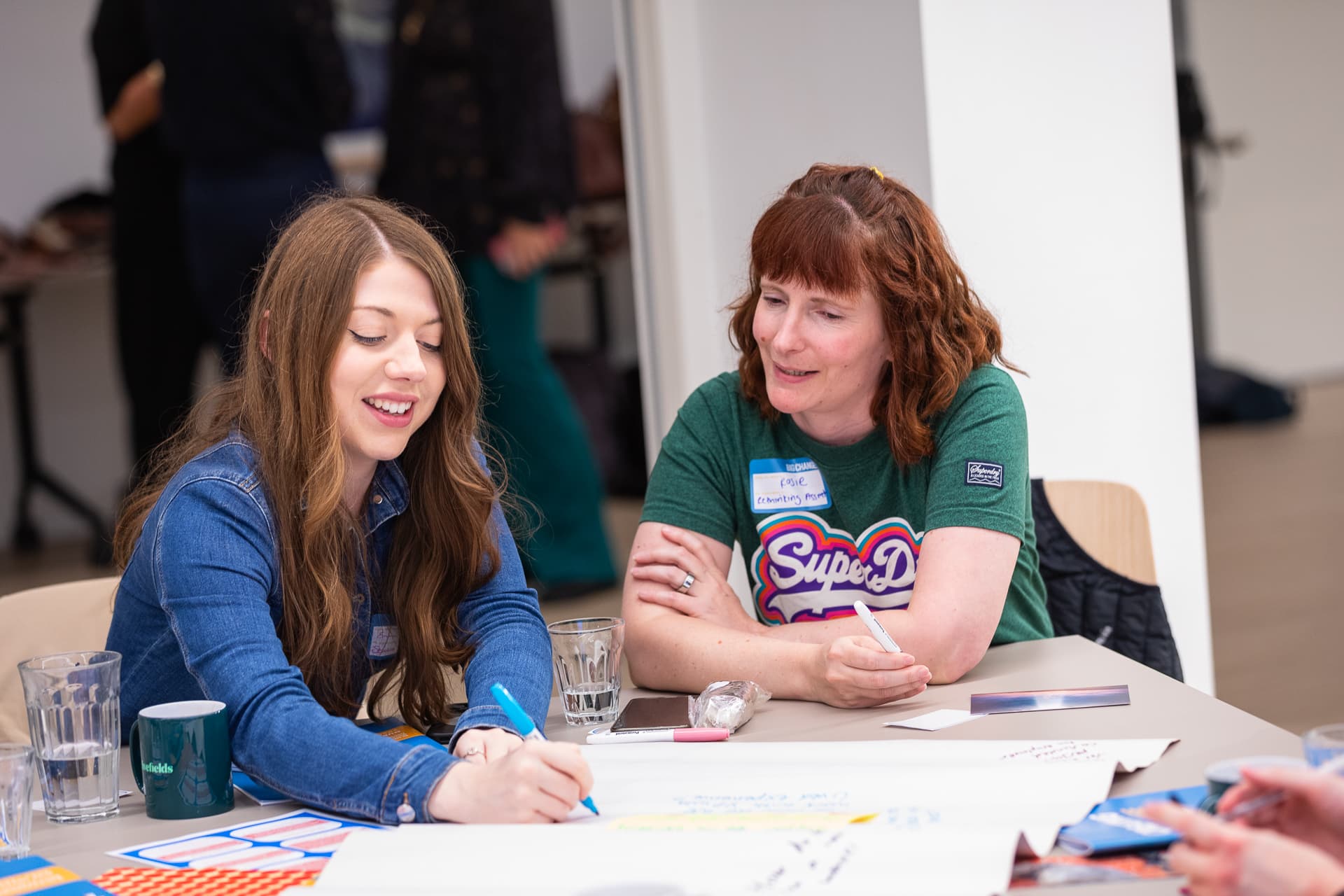
Clover Hogan
Activist, Speaker, Founder of Force of Nature
Rethinking and reshaping systems with and for young people.

This is a story about the leadership we need, for the future we want: leadership from people committed to rethinking and reshaping systems so that all young people can thrive.
It is a celebration - of the diverse leaders from across generations who are showing the way, and an invitation - to anyone who wants to develop their own leadership or support it in others. We invite you:
The story has been created by Big Change and eight incredible partners. It draws on their collective wisdom, the insights of over 30 leaders worldwide, and on wider evidence. It includes personal narratives, raw reflections and diverse perspectives that are woven together to bring insights and ideas to life.
Leadership is both an act in a moment and a lifelong journey. Whatever your age and experience, whether you are leading in a formal role, or as a changemaker, activist, or social entrepreneur, we hope this story challenges and inspires you.
You can explore the full story of this research on this page. It is not a complete guide or toolkit, but is designed to provoke reflection, conversation, and action. Reflection questions, short leader stories and resources are included at the end of each section.

The future we will get depends on the kind of leadership we have. To challenge the status quo and shift systems in ways that last, we need to recognise and support a different kind of leadership: leadership that may already exist in the people and places we overlook.
It will take leaders from across generations, acting individually and collectively, to shape a future where all young people thrive.
It’s time to find, support and connect the leaders who embody this future - those who share the vision and bring it to life in how they act today.
Lasting change happens through the choices and actions of many. Yet dominant ideas about leadership – what it is and who gets to do it – set clear dividing lines between those who have control and those who don’t. Between those who get to decide, and those who deal with the impact of those decisions.
If we want future systems that are different from the ones we have today – more sustainable, inclusive, adaptive – we need to invest in leaders who can imagine them and leadership that brings them about. We need more leaders who don’t just manage what exists, they create something new, even when the forces around them are trying to keep things the same. Leaders who push for changes to systems that go beyond the surface and last over time: deep shifts to the purpose of systems, sharing power, and greater collaboration, experimentation, and learning.
Committing to a hopeful vision for the future means not just fixing what is broken but rewriting the narrative entirely. And this requires leaders who are willing to address an uncomfortable truth: not only are things not working well enough, many young people are experiencing harm because the systems meant to support them are falling short.
When thriving is the goal, it means taking a holistic view of who young people are, what they want and need, and how and where they live. Young people can thrive when they have a sense of purpose and agency in their lives, strong relationships to support them, and opportunities to learn and grow.
Prevailing models say leadership is an individual pursuit - a job to be done by those at the top. But what if leadership isn’t about standing apart, but moving together? What if it emerges in the spaces that connect individuals to a collective: in the trust they build, the risks they take together, and the shared purpose that propels them forward?
The leadership we need happens for and with young people. As many young people feel let down by and disconnected from the “leaders”, institutions and systems shaping their lives, leadership must become a shared endeavour that builds greater connections and cohesion. When younger and older people lead together, they don’t only combine their insight, ideas and expertise - they model an inclusive future as they create bridges between different places, communities, and generations.
The phrase that always got thrown at me was, ‘You are the future, you’re going to solve all the problems in the world’. It really rubbed me the wrong way. Don’t put that all on my shoulders, it’s an unfair burden to say one generation is responsible for solving problems that existed before we were born. I’ve learned to say thank you, but let’s build this thing together.
Jordan Bowman, What Young Leaders Want — And Don’t Want — From Older Allies

Leadership isn’t a title, a natural talent, or a rare trait reserved for a select few - it’s something you can build, practice, and embody. Leadership occurs every day in small, unnoticed moments and through bold, visible actions.
It’s the young person who refuses to accept ‘that’s just the way things are’, the teacher who disrupts patterns of oppression, the colleague who rallies others to fix what’s broken, and the manager who knows when to step back and make space for others.
Leadership should not be about who you are, but about what you do; a consistent practice you attend to and develop over time.
Conventional leadership myths value visibility over substance. But the kind of leadership we need more of emerges in unexpected places, through acts of resistance, resilience, and service. Leadership doesn’t require permission, a degree, or a title. It happens in quiet moments of courage, in unseen decisions, and in the ability to keep going when systems are built to resist change.
If leadership is happening all the time, why do so many struggle to see themselves as leaders? Many societal structures are built to preserve power and privilege rather than acknowledge and grow different kinds of leaders. Those who step forward to challenge these structures - especially those who are most marginalised - often face resistance because their leadership disrupts existing power dynamics. For those leaders who do hold formal positions of power, their obligation is to help create the conditions for leadership to grow.
Traditional leadership models treat power as a zero-sum game - if one person leads, another must follow. But leadership isn’t scarce and it doesn’t run out. Power expands when it is shared. Instead of hoarding power, great leaders create more of it. They make things happen, but not through dominance or control. Leadership is mobilising over waiting, connection over control, and courage over comfort.
The idea that leadership belongs to a select few is not just outdated, it’s dangerous. It locks people out, upholds broken systems, and keeps the future small. For leadership to expand to different people and places, we need to address the barriers that suppress and hold people back. Instead of asking, ‘Who is the leader?’ we should be asking, 'How do we create systems that cultivate and sustain leadership, rather than concentrate it?’
Great leaders continuously evolve by learning, unlearning, and adapting as their contexts shift. What works today might not work tomorrow. Leaders who stay the same limit themselves and their impact. Leadership requires a commitment to continuous self-examination - challenging outdated assumptions, questioning inherited systems, and having the humility to recognise when letting go of power is the most transformative action.
This kind of leadership is hard and needs to be intentionally supported. For leaders to sustain themselves and their work, deepen their learning, and navigate complexity, they need spaces for reflection and connection. Being part of a community of peers and allies, with time to step outside immediate pressures, can help leaders realign with their purpose, and draw energy, encouragement and insight from others. They also need practical tools and skills that strengthen their ability to lead relationally - to listen deeply, build agency in others, and hold conflict.
Leadership can come from anywhere, anywhere in the system, and it's quite often the act of either helping people or themselves face a difficult truth. And then mobilising others to take action.
Dan Farag, The Young Foundation

Through our collaborative enquiry we explored four dimensions that reveal how we can lead into a thriving future, with and for young people. Leadership deepens and expands as leaders develop across all four dimensions: purpose, agency, relationships and growth.
Leaders work on themselves and channel their self-awareness into bold, shared action.
Future systems that are sustainable, inclusive and adaptive will emerge through the interwoven efforts of leaders from across generations who bring purpose, agency, relationships, and growth into motion.
Reach out to us at info@big-change.org
We'd love to hear from you!

Activist, Speaker, Founder of Force of Nature

Director of Innovation & Practice, The Young Foundation

Founder of Potential MCR

Chief Purpose & Vision Officer at Virgin, Co-founder of Big Change, Chair of Virgin Unite

Executive Director of Inner Development Goals Initiative

Co- founder Bridge and Coach in A Box

Educator and social entrepreneur, Co-Founder of Dream a Dream